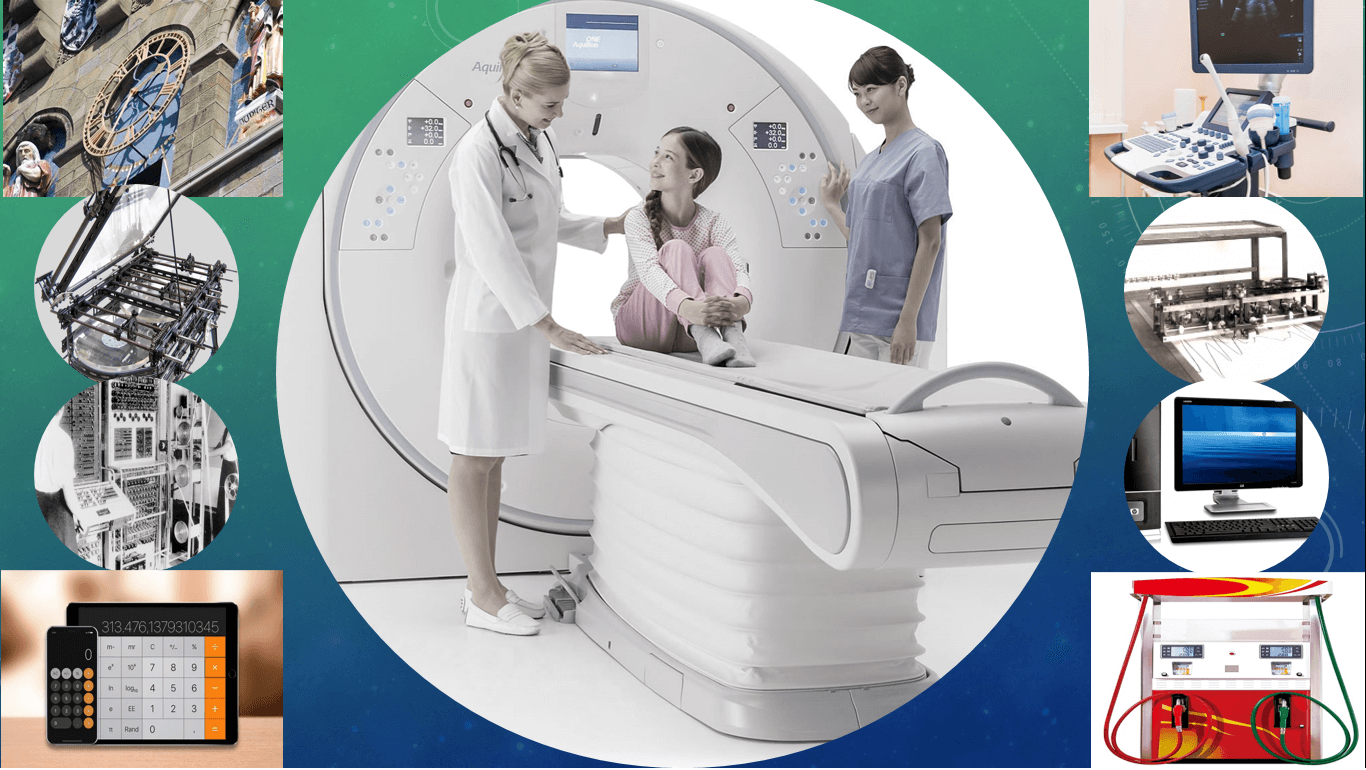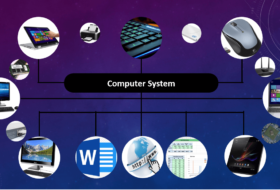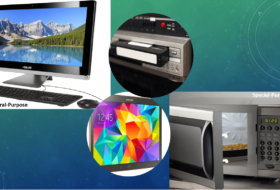In addition to the classification of computer by generation and size, computers can be classified by type. Classification of computer by type distinguishes computers based on the form of data it processes.
The precision of a computer system can be described in two ways: discrete, and continuous.
In this tutorial, we shall discuss the classification of computer by type and degree of versatility.

Classification of computer by Type
The three classes of the computer by type include:
- Analog computers
- Digital computers, and
- Hybrid computers
Analog Computers
In real life, most of the signals generated are analogous in form or represent continuous variables, e.g. sound. Sound is represented by a wave of continuous length. To measure such signals, we need a reliable device that can factor in such signals and give a suitable output.
| Feature | Description |
| Purpose | Processes continuous/ analog data |
| Speed | Slow |
| Accuracy | Produce varying results |
| Reliability | Results are not reliable |
| Mechanical operations | Yes (uses a mechanical rotation of gears) |
| Uses | Simulation of aircraft, nuclear power plants, etc. |
| Types | Tide predictor, harmonic analyzer, differential analyzer, etc |
| Examples | The slide rule, voltmeter, analog clock |
An analog computer is therefore defined as a device or machine that is designed to process continuously changing data. It harnesses such a continuous flow of data and generates a user-friendly and readable result.
In analog computers, data is stored in the physical quantity of its natural form (i.e., continuous form). It then uses measures (mechanical rotation of gears) to perform calculations that generate human-readable output. Data is measured directly without the need for conversion into numerals and codes, e.g. temperature.
Also, in analog computers, results are not usually accurate, because they cannot produce exact equivalent results. Hence, it is used where exact values are not required, e.g. speed. They are equally slow and less reliable.
Analog computers are widely used to simulate dynamic systems and in scientific and industrial applications. Some use cases include simulation of aircraft, nuclear power plants, industrial chemical processes, analysis of hydraulic and electronic networks, etc.
Examples of analog data include sound, temperature, electricity, pressure, speed, etc.
Types of analog computers
There are five (5) types of analog computers, namely:
- Slide rule – the simplest analog computer for performing arithmetic operations.
- Tide predictor – developed in 1873 by William Thompson (Lord Kelvin), used to predict the daily occurrence of tides.
- Harmonic analyzer – developed by Olaus Henrici in 1894 for determining the fundamental and harmonic components of complex sound waves.
- Differential analyzer – invented by Vannevar Bush and colleagues in 1931 to solve complex differential equations.
- Castle clock – developed by Al-Jazari in 1206, and used to keep time and display zodiac, solar, and lunar orbits.
Analog computers can be classified into mechanical and electronic analog computers. Mechanical analog computers use mechanical components such as rotating shafts to carry variables from one mechanism to another.
Electronic analog computers have operational amplifiers used to perform mathematical operations. It enabled analog computers to perform real-time calculations and were faster than their mechanical counterpart.
Some examples of analog computers include slide rules, speedometers, automatic voltage regulators, seismometers, analog clocks, thermometers, voltmeters, tide predictors, etc.
Digital Computer:
A digital computer is a computer that uses discrete values to process data and solves problems. Such machines operate on data of different magnitude by expressing them in binary numbers.
| Feature | Description |
| Purpose | Processes discrete data |
| Speed | Fast |
| Accuracy | Produce precise results |
| Reliability | Results are reliable |
| Mechanical operations | No, mostly electronic |
| Uses | Solving complex scientific and business problems |
| Functional components | Input, memory, processing, output |
| Examples | ENIAC, Desktop, calculator |
A binary number is a system of counting that expresses numbers in 0 and 1. In digital computing, 0 is used to represent an off state and 1 represents an on the state. Digital computers manipulate 0 and 1 digits and their combinations based on a set of instructions retained in their memory.
With an advanced level of data manipulation, digital computers can be used to solve complex problems in science, industry, and business. It can be used to perform mathematical calculations in scientific research, facilitate engineering and product design, etc.
Digital computers generate more accurate results at a rate faster than analog computers. Because input values do not depend on physical variations, they are more reliable.
Components of a digital computer
Digital computers have four major functional components namely:
- Input unit – this represents the devices used to send data into the computer.
- Output unit – this includes the devices and peripherals used to bring out results from the computer.
- Memory unit – this represents the devices used to store program and instruction data in the computer
- Processing unit – this represents the devices that manipulate data and information to generate results. They use a special logic unit called ALU (arithmetic logic unit) to perform calculations. The control unit (CU) on the other hand directs information in the memory in an appropriate sequence.
There are different generations of digital computers. The progression to digital computers began with the invention of mechanical counting devices.
Examples of digital computers include Harvard Mark 1, ENIAC, Colossus (first electronic digital computer), calculator, digital clock, personal computers, etc.
Hybrid Computer:
A hybrid computer takes advantage of the functionalities of analog and digital systems. They combine both functionalities to generate faster and more accurate results.
| Feature | Description |
| Purpose | Processes continuous and discrete data |
| Speed | Very fast |
| Accuracy | Produce accurate results |
| Reliability | Results are reliable |
| Mechanical operations | No |
| Uses | The medical field, industries, etc |
| Types | General-purpose, special=purpose, and large electronic hybrid computers |
| Examples | Hycomp 250, fuel dispenser, ATM |
A hybrid computer has an analog unit for computing continuous data and a digital memory unit for the precision of results. The analog unit solves differential and complex mathematical equations. The digital unit controls the flow of instructions and maintains logical and numerical operations.
Unlike hybrid systems which convert analog signals to digital, hybrid computers process both analog and digital data and generate results.
Examples include HYDAC 2400, Hycomp 250, Starglow Hybrid computer, cell phone, petrol dispenser, ATM, Ultrasound machine, electrocardiogram machine, etc.
Types and uses of hybrid computers
There are three main types of hybrid computers, namely;
- Large electronic hybrid computers – are used to solve complex differential equations.
- General-purpose hybrid computers – are used to carry out different concurrent tasks with the help of different applications.
- Special purpose hybrid computers – use specialized applications to solve specific problems.
Some of the applications and uses of hybrid computers include the following fields:
- Medical field – for example, CT (computed tomography) scan, echocardiogram, and ultrasound machines. Also, used in intensive care units.
- Petrol or gas stations – for example, fuel dispenser units.
- Used in different sectors such as airline, defense, laboratories, industries, etc.
Conclusion
Classification of computer by type is divided into three: analog, digital and hybrid computers. Analog computers process continuous data, digital computers process discrete data, and hybrid computers process both kinds of data.




